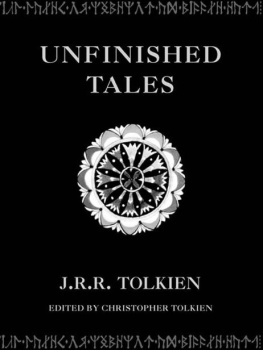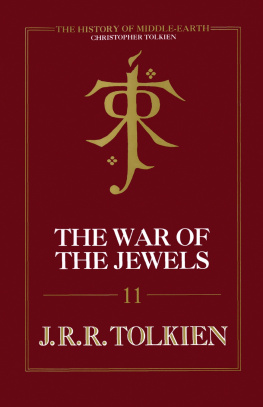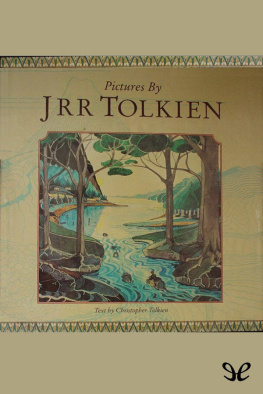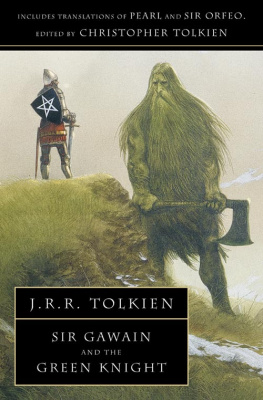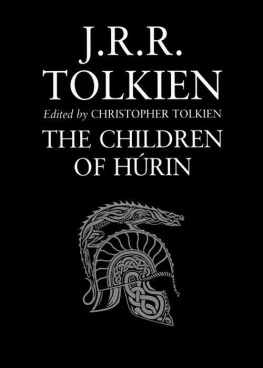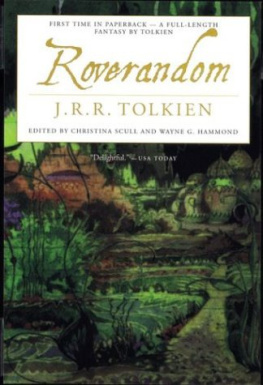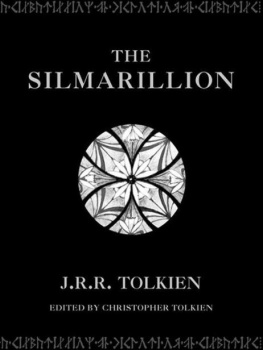Christopher Tolkien - The Lays of Beleriand
Here you can read online Christopher Tolkien - The Lays of Beleriand full text of the book (entire story) in english for free. Download pdf and epub, get meaning, cover and reviews about this ebook. City: London, year: 1990, 1985, publisher: Unwin Paperbacks, genre: Detective and thriller. Description of the work, (preface) as well as reviews are available. Best literature library LitArk.com created for fans of good reading and offers a wide selection of genres:
Romance novel
Science fiction
Adventure
Detective
Science
History
Home and family
Prose
Art
Politics
Computer
Non-fiction
Religion
Business
Children
Humor
Choose a favorite category and find really read worthwhile books. Enjoy immersion in the world of imagination, feel the emotions of the characters or learn something new for yourself, make an fascinating discovery.
- Book:The Lays of Beleriand
- Author:
- Publisher:Unwin Paperbacks
- Genre:
- Year:1990, 1985
- City:London
- Rating:4 / 5
- Favourites:Add to favourites
- Your mark:
- 80
- 1
- 2
- 3
- 4
- 5
The Lays of Beleriand: summary, description and annotation
We offer to read an annotation, description, summary or preface (depends on what the author of the book "The Lays of Beleriand" wrote himself). If you haven't found the necessary information about the book — write in the comments, we will try to find it.
The Lays of Beleriand — read online for free the complete book (whole text) full work
Below is the text of the book, divided by pages. System saving the place of the last page read, allows you to conveniently read the book "The Lays of Beleriand" online for free, without having to search again every time where you left off. Put a bookmark, and you can go to the page where you finished reading at any time.
Font size:
Interval:
Bookmark:
This third part of 'The History of Middle-earth' contains the twomajor poems by J. R. R. Tolkien concerned with the legends ofthe Elder Days: the Lay of the Children of Hrin in alliterativeverse, and the Lay of Leithian in octosyllabic couplets. Thealliterative poem was composed while my father held appointments at the University of Leeds (19205); he abandoned it forthe Lay of Leithian at the end of that time, and never turned to itagain. I have found no reference to it in any letter or other writingof his that has survived (other than the few words cited on p. 3),and I do not recollect his ever speaking of it. But this poem, whichthough extending to more than 2000 lines is only a fragment inrelation to what he once planned, is the most sustained embodiment of his abiding love of the resonance and richness of soundthat might be achieved in the ancient English metre. It marks alsoan important stage in the evolution of the Matter of the ElderDays, and contains passages that strongly illumine his imagination of Beleriand; it was, for example, in this poem that thegreat redoubt of Nargothrond arose from the primitive caves ofthe Rodothlim in the Lost Tales, and only in this poem wasNargothrond described. It exists in two versions, the secondbeing a revision and enlargement that proceeds much less far intothe story, and both are given in this book.
My father worked on the Lay of Leithian for six years,abandoning it in its turn in September 193 I. In 1929 it was read sofar as it then went by C. S. Lewis, who sent him a most ingeniouscommentary on a part of it; I acknowledge with thanks thepermission of C. S. Lewis PTE Limited to include this.
In 1937 he said in a letter that 'in spite of certain virtuouspassages' the Lay of Leithian had 'grave defects' (see p. 366). Adecade or more later, he received a detailed, and remarkablyunconstrained, criticism of the poem from someone who knewand admired his poetry. I do not know for certain who this was. Inchoosing 'the staple octosyllabic couplet of romance,' he wrote,my father had chosen one of the most difficult of forms 'if onewishes to avoid monotony and sing-song in a very long poem. I amoften astonished by your success, but it is by no means consistently maintained.' His strictures on the diction of the Layincluded archaisms so archaic that they needed annotation,distorted order, use of emphatic doth or did where there is noemphasis, and language sometimes flat and conventional (incontrast to passages of 'gorgeous description'). There is no recordof what my father thought of this criticism (written when TheLord of the Rings was already completed), but it must beassociated in some way with the fact that in 1949 or 1950 hereturned to the Lay of Leithian and began a revision that soonbecame virtually a new poem; and relatively little though hewrote of it, its advance on the old version in all those respects inwhich that had been censured is so great as to give it a sadprominence in the long list of his works that might have been. Thenew Lay is included in this book, and a page from a finemanuscript of it is reproduced as frontispiece.
The sections of both poems are interleaved with commentarieswhich are primarily concerned to trace the evolution of thelegends and the lands they are set in.
The two pages reproduced from the Lay of the Children ofHrin (p. 15) are from the original manuscript of the first version,' lines 297317 and 31833. For differences between the readings ofthe manuscript and those of the printed text see pp. 45. The pagefrom the Lay of Leithian in Elvish script (p. 299) comes from the'A' version of the original Lay (see pp. 1501), and there arecertain differences in the text from the 'B' version which is thatprinted. These pages from the original manuscripts are reproduced with the permission of the Bodleian Library, Oxford, and Ithank the staff of the Department of Western Manuscripts at theBodleian for their assistance.
The two earlier volumes in this series (the first and second partsof The Book of Lost Tales) are referred to as 'I' and 'II'. The fourthvolume will contain the 'Sketch of the Mythology' (1926), fromwhich the Silmarillion 'tradition' derived; the Quenta Noldorinwaor History of the Noldoli (1930); the first map of the North-westof Middle-earth; the Ambarkanta ('Shape of the World') byRumil, together with the only existing maps of the entire World;the earliest Annals of Valinor and Annals of Beleriand, byPengolod the Wise of Gondolin; and the fragments of translationsof the Quenta and Annals from Elvish into Anglo-Saxon bylfwine of England.
The Lay of the Children of Hrin
Original 'Silmarillion'. Form orig[inally] composed c. 1926 -- 30 forR. W. Reynolds to explain background of 'alliterative version' of TurinR the Dragon: then in progress (unfinished) (begun c. 1918).He seems to have written first '1921' before correcting this to '1918'.R. W. Reynolds taught my father at King Edward's School, Birmingham (see Humphrey Carpenter, Biography, p. 47). In a passage of hisdiary written in August 1926 he wrote that 'at the end of last year' he hadheard again from R. W. Reynolds, that they had corresponded subsequently, and that he had sent Reynolds many of his poems, includingTinviel and Trin ('Tinviel meets with qualified approval, it is tooprolix, but how could I ever cut it down, and the specimen I sent of Trinwith little or none'). This would date the 'Sketch' as originally written (itwas subsequently heavily revised) definitely in 1926, probably fairlyearly in the year. It must have accompanied the specimen of Trin (thealliterative poem), the background of which it was written to explain, toAnacapri, where Reynolds was then living in retirement.My father took up his appointment to the Professorship of Anglo-Saxon at Oxford in the winter term (OctoberDecember) of 1925,though for that term he had to continue to teach at Leeds also, since theappointments overlapped. There can be no doubt that at any rate thegreat bulk of the alliterative Children of Hrin (or Trin) was completedat Leeds, and I think it virtually certain that he had ceased to work on itbefore he moved south: in fact there seems nothing to oppose to thenatural assumption that he left 'Trin' for 'Tinviel' (the Lay ofLeithian), which he began according to his diary in the summer of 1925(see p. 159 and footnote).For the date of its commencement we have only my father's later (andperhaps hesitant) statement that it was 'begun c. 1918'. A terminus aquo is provided by a page of the earliest manuscript of the poem, which iswritten on a slip from the Oxford English Dictionary bearing the printer'sstamp May 1918. On the other hand the name Melian which occurs nearthe beginning of the earliest manuscript shows it to be later than thetypescript version of the Tale of Tinviel, where the Queen's name wasGwenethlin and only became Melian in the course of its composition(II.51); and the manuscript version of that Tale which underlies thetypescript seems itself to have been one of the last completed elements inthe Lost Tales (see I.204).The Children of Hrin exists in two versions, which I shall refer to asI and II, both of them found in manuscript and later typescript (IA, IB;IIA, IIB). I do not think that the second is significantly later than thefirst; it is indeed possible, and would not be in any way uncharacteristic,that my father began work on II while he was still composing at a laterpoint in I.II is essentially an expansion of I, with many lines, and blocksof lines, left virtually unchanged. Until the second version is reached itwill be sufficient to refer simply to 'A' and 'B', the manuscript andtypescript of the first version.The manuscript A consists of two parts: first (a) a bundle of smallslips, numbered 132. The poem is here in a very rough state with manyalternative readings, and in places at least may represent the actualbeginnings, the first words written down. This is followed by (b) a set oflarge sheets of examination paper from the University of Leeds, numbered 33 ff., where the poem is for the most part written out in a morefinished form -- the second stage of composition; but my father wrote inline-numbers continuously through (a) and (b) lines 1528 in (a), lines528 ff. in (b). We have thus one sole text, not two, without any overlap;and if (a), the slips, ever existed in the form of (b), the examinationsheets, that part has disappeared. In part (b) there are many lateremendations in pencil.Based on this manuscript is the typescript B. This introduces changesnot found in A or its emendations; and it was itself emended both in inkand pencil, doubtless involving several movements of revision. To take asingle line as exemplification: line 8 was written first in A:
Font size:
Interval:
Bookmark:
Similar books «The Lays of Beleriand»
Look at similar books to The Lays of Beleriand. We have selected literature similar in name and meaning in the hope of providing readers with more options to find new, interesting, not yet read works.
Discussion, reviews of the book The Lays of Beleriand and just readers' own opinions. Leave your comments, write what you think about the work, its meaning or the main characters. Specify what exactly you liked and what you didn't like, and why you think so.


